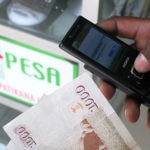Why are mobile payments so successful in developing countries?
Recent years have seen an explosion in mobile payments in countries like Kenya or the area of Bangladesh. The two countries have something in common: both are developing areas, whose economy and society are in a somewhat precarious situation. This said, a question arises. Why are these systems working here and not in other places where greater efforts are being made to create payment platforms with cell phones? What do both places have in common? Let's find out.

STaking money out of an ATM or paying with our credit or debit card in any commercial establishment is an everyday action we do so often it goes unnoticed by most of us. The penetration of these payment systems is such that Spain leads the pack in Europe in the number of ATMs per inhabitant (61,992 ATMs according to 2013 figures), with a ratio of one ATM for every 760 people.
But behind each ATM there needs to be a basic security infrastructure, a stable communications system and a system of cash recharging and movement, which in other areas of the world is genuinely difficult to implement. How can you pay in a community of 500 inhabitants in Kenya or in the islands of Bangladesh? Herein lies the innovation and penetration of payment by cell phone.towel on your hard drive you agree with me all.
The case of M-Pesa, a resounding and innovative success
M-Pesa was one of the first systems to embrace payment by cell phone in the developing countries. In 2007 Safaricom, the Kenyan telecommunications company, developed a system for transferring micro-credits via cell phones supported by a network of agents. This system was initially intended to drive local development and its objective was to reduce funding costs, but it found its real niche for its use with the payment options it offers.

M-Pesa was one of the first systems to embrace payment by cell phone in the developing countries.
Being able to access cash in Kenya was –and is– relatively complicated, and setting up the infrastructure and technology necessary for an ATM network and physical POS even more so. The simplicity and straightforwardness of making a payment via an SMS between private individuals, businesses and other organizations has led to a situation where over 58% of the adult population of Kenya regularly make payments with their cell phones.
The functionalities of paying via cell phone in these countries are its breathtaking simplicity, but also the fact that it covers a fundamental need: namely, to provide the population with agile, rapid, secure and simple payment instruments.
The economic boom in Bangladesh under examination
Bangladesh is one of the most underdeveloped countries in the world, with a population beset by a whole range of shortages in which vast rural areas often do not have guaranteed access to basic services. The lack of resources such as electrical power, water or telecommunications infrastructures is among the major problems to be resolved in this country.
Banking penetration in rural areas is minimal, and the best means to extend bank usage in the country and improve internal economic relations is to equip the country with mobile banking. In a country with major differences in the payment capacity and wealth of its inhabitants, the way to narrow the gap between bancarized and non-bancarized profiles is by reducing transaction costs and achieving a banking sector within reach of the economic profiles in that country.
Banking penetration in rural areas is minimal, and the best means to extend bank usage in the country and improve internal economic relations is to equip the country with mobile banking
This is the path Bangladesh has taken, and in a period of 4 years it has achieved 25.6 million regular mobile banking users with a growing economy supported on this payment mode. In terms of percentage it represents 15% of the population, but this figure becomes far more significant when we consider that only 15% of the Bangladeshi population has access to traditional banking due to the costs involved.
The volume of payments made by mobile banking is of such magnitude in Bangladesh that it accounts for 5.5% of its GDP; very far from the 55% in Kenya, but an impressive figure for a country in which only four years ago financial services were only available to a small part of the population.
And what's happening in Europe with mobile payments?
Europe has all the technology, the infrastructure and the payment systems via cell phone, and of a far greater complexity than those described here. But Europe has such a variety and offer of cash and a tradition of paying with cards that it will require far more than a simple nudge to generate a massive shift by the population from cards to cell phones.
Changing the habits of use of a very secure system like payment with cards –accepted by everyone– will take longer than expected. In spite of the wide variety and availability of payment options by cell phone in Europe, their use today is still negligible. The European profile is one of customs, with a greater than expected resistance to change.